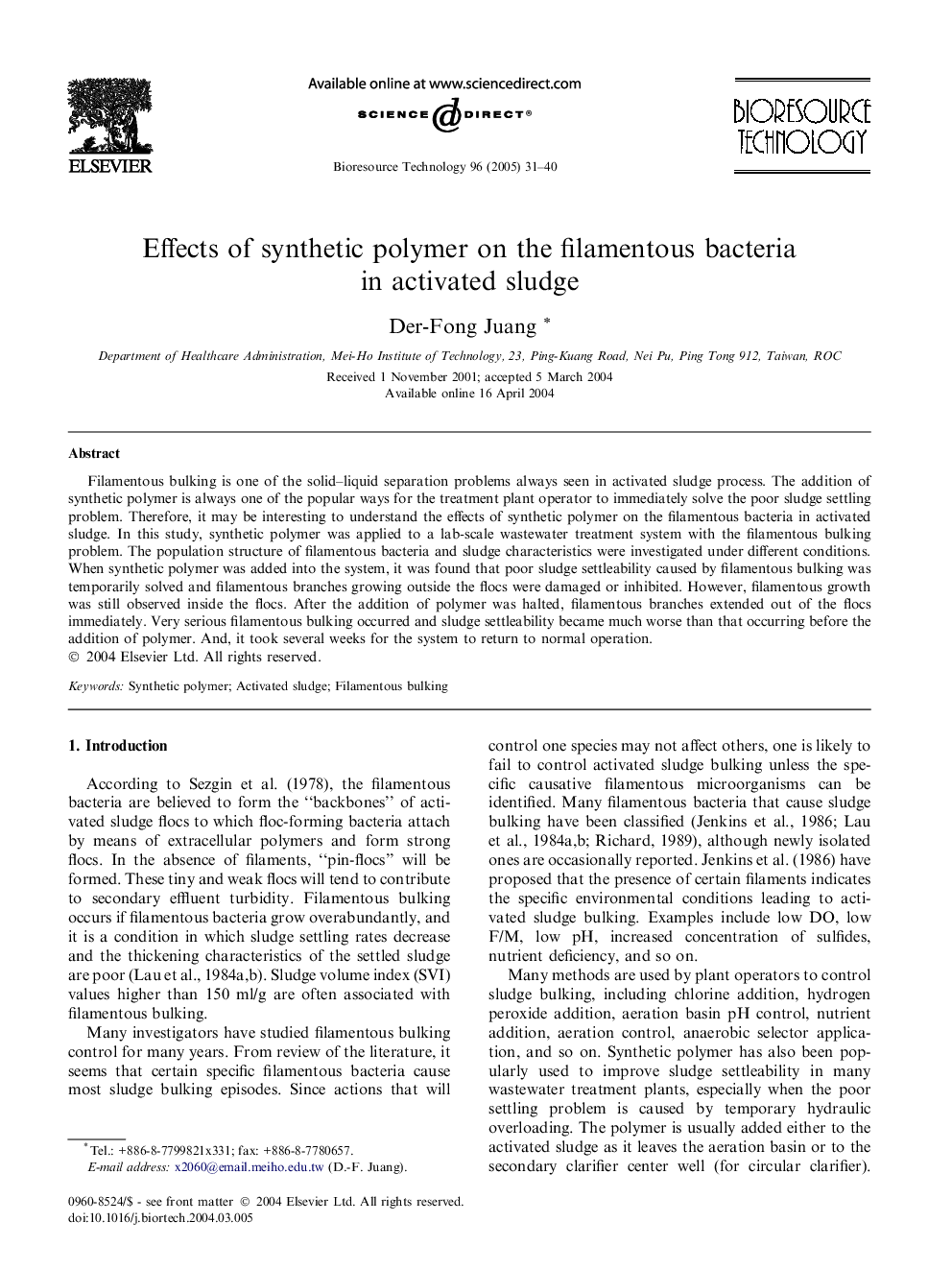| Article ID | Journal | Published Year | Pages | File Type |
|---|---|---|---|---|
| 10396307 | Bioresource Technology | 2005 | 10 Pages |
Abstract
Filamentous bulking is one of the solid-liquid separation problems always seen in activated sludge process. The addition of synthetic polymer is always one of the popular ways for the treatment plant operator to immediately solve the poor sludge settling problem. Therefore, it may be interesting to understand the effects of synthetic polymer on the filamentous bacteria in activated sludge. In this study, synthetic polymer was applied to a lab-scale wastewater treatment system with the filamentous bulking problem. The population structure of filamentous bacteria and sludge characteristics were investigated under different conditions. When synthetic polymer was added into the system, it was found that poor sludge settleability caused by filamentous bulking was temporarily solved and filamentous branches growing outside the flocs were damaged or inhibited. However, filamentous growth was still observed inside the flocs. After the addition of polymer was halted, filamentous branches extended out of the flocs immediately. Very serious filamentous bulking occurred and sludge settleability became much worse than that occurring before the addition of polymer. And, it took several weeks for the system to return to normal operation.
Related Topics
Physical Sciences and Engineering
Chemical Engineering
Process Chemistry and Technology
Authors
Der-Fong Juang,
